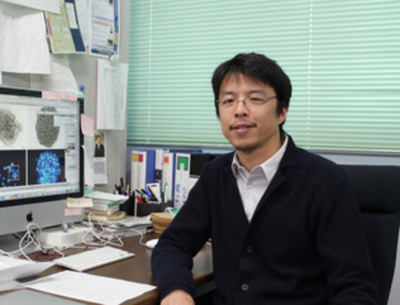J-STORIES ー 世界に2頭しか存在しない絶滅危惧種のキタシロサイのiPS細胞から卵子のもととなる生殖細胞を作り出すことに、大阪大学大学院医学系研究科の林克彦(生殖遺伝学)教授らの同大研究グループが成功した。
これまでマウスやヒトの生殖細胞についてはすでに作製例があるが、野生動物での成功は世界で初めて。この技術はキタシロサイだけでなく、絶滅の危機にある「他の野生動物にも応用できる」(林教授)とみられている。今後、卵子作製が実現すれば、繁殖を期待できる可能性もあるという。
林教授は2016年にマウスのiPS細胞から卵子を作ることに世界で初めて成功した実績がある。ヒトやマウスに比べて、野生動物の場合は生殖細胞や卵子の作製が難しい。細胞そのものの取得が困難であることに加えて、種の違いで条件がさまざまに異なるからだ。

林教授は、ドイツのライプニッツ動物園野生生物調査研究所のトーマス・ヒルデブラント教授がリーダーを務めるドイツ、イタリア、チェコ、日本の合同研究事業「バイオレスキュープロジェクト」のメンバーとして、絶滅の危機にある野生動物、とくにキタシロサイの種を保存し、個体数を増やす研究に取り組んでいる。
バイオレスキュープロジェクトでは生存している2頭のキタシロサイから未熟な卵細胞を採取し、冷凍保存されたオスの精子と受精させて胚を生成することに成功しており、キタシロサイと種の近いミナミシロサイを代理母として出産させる計画も並行して進めている。
%40Ol%20Pejeta.jpg)
キタシロサイは2018年に最後のオスが死亡、現在はケニアの自然保護区で飼育されている母娘2頭だけが生き残っている。キタシロサイのみならず、アフリカとアジアに生息する6種のサイは全て絶滅の危機もあるとされる。
その大きな原因は、中国やベトナムでサイのツノが万病に効く漢方として珍重されており、非常な高値で取引されていることにある。現在も密猟によって乱獲が進んでおり、生息地では密猟者とレンジャーの攻防が続いているという。
林教授はJ-Storiesの取材に対し、「絶滅危惧種を僕らのテクノロジーで救いたい。とくに、人の手によって絶滅に追い込まれたキタシロサイを救うのは人としての務めではないかと感じている」と語っている。
記事:嵯峨崎文香 編集:北松克朗
トップページ写真:大阪大学 提供
この記事に関するお問い合わせは、jstories@pacificbridge.jp までお願いします。
***
***
本記事の英語版は、こちらからご覧になれます。
%40Ol%20Pejeta%20Conservancy%2C%20photo%20by%20Jan%20Zwilling%E3%81%AE%E3%82%B3%E3%83%92%E3%82%9A%E3%83%BC.jpg)




_bigthumbnail.jpeg)














![[PODCAST] 如何打造成功的新創企業社群(第2集)](https://storage.googleapis.com/jstories-cms.appspot.com/images/1748493203370business-man-holding-light-bulb-social-network-2024-10-31-22-37-36-utc_smallthumbnail.jpg)


